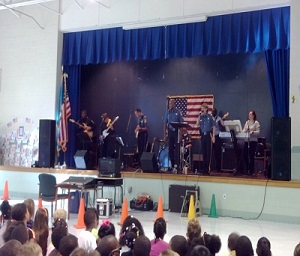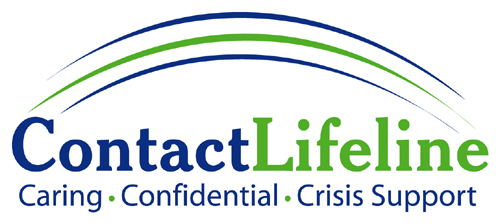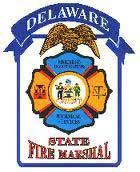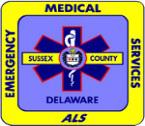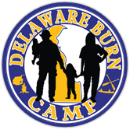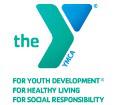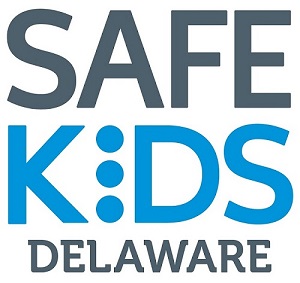Delaware Injury Prevention Program
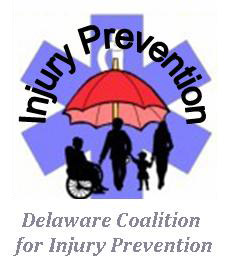
| Home | Data | Resources | Activities Calendar |
PREVENTION TEAMS:
| – Dog Bites | – Drowning/Submersion Injuries | – Falls |
| – Fires/Burns | – Motor Vehicle Crashes | – Poisoning |
| – Traumatic Brain/Spinal Cord Injury | – Violent Injury |
Delaware Coalition for Injury Prevention
Injuries can affect anyone, regardless of age, race, or economic status. More Delawareans die from unintentional injuries such as motor vehicle crashes and falls in the first four decades of life than from any other cause. Injuries have physical, emotional, and financial consequences that impact lives of individuals, their families, their communities, and society. The financial burden of injury-related lifelong disability has extensive and wide-ranging effects. All this, despite the fact that many injuries and acts of violence are preventable.
"Injury is probably the most under recognized major public health problem facing the nation today, and the study of injury represents unparalleled opportunities for reducing morbidity and mortality and for realizing significant savings in both financial and human terms-all in return for a relatively modest investment." (Injury Prevention: Meeting the Challenge, The National Committee for Injury Prevention and Control. New York: American Journal of Preventive Medicine, 1989, p.1)
"If a disease were killing our children at the rate unintentional injuries are, the public would be outraged and demand that this killer be stopped."
– Dr. C. Everett Koop
Throughout the lifespan and wherever they live, Americans are at risk for disability or death due to injury. No age or location is truly "safe" when it comes to injury and violence. But injuries have associated risk factors which can be predicted and modified. Therefore, injuries must not be viewed as random accidents, but as preventable occurrences in need of organized efforts to save lives . Development of these prevention efforts is the goal of Delaware’s Coalition for Injury Prevention.
Coalition for Injury Prevention Vision – A safe, injury-free Delaware.
Coalition for Injury Prevention Mission – The Delaware Coalition for Injury Prevention is committed to providing leadership to reduce injury-related morbidity and mortality through statewide injury prevention initiatives. These initiatives include influencing policy, increasing capacity through community partnerships, and evaluating outcomes. The Coalition will build capacity through education, advocacy, research, and epidemiologic analyses as means to decrease both intentional and unintentional injury.
Coalition for Injury Prevention History and Purpose
Under the auspices of the Office of Emergency Medical Services and its Trauma System Development Project, the concept of the injury prevention program was introduced in 2000 with a vision that Delaware’s culturally diverse population would be empowered to reduce their risks for injuries by making safe choices. In 2004, the Coalition started meeting on a quarterly basis.
The first and most obvious challenge to injury prevention efforts is to be successful – to get the message to the public, especially under-represented groups, in such a way that injuries and injury-related deaths actually decrease. With the assistance of one of the Coalition’s strongest supporters, the Delaware Office of Primary Care and Rural Health, the Delaware Coalition for Injury Prevention began and continues to develop and support public education injury prevention programs. Through these efforts, the Coalition’s goal of safe communities throughout Delaware will be realized, as measured by fewer injuries, fewer risk-taking behaviors, safer environments, and reduced incidence of injury-related disabilities. Approximately 40 agencies from all areas of the state are currently Coalition members. Through effective surveillance, partnerships, interventions, training, and evaluation the Coalition’s individual members and their agencies strive to teach all Delawareans that injuries are preventable.
Injury prevention is vital work. Prevention has been proven to save lives and healthcare dollars. Delaware’s funding for this pressing health concern is 10 times lower than the average funding throughout the states (America’s Emergency Care Environment, A State-By-State Report Card – 2014). To help overcome that challenge, the Coalition facilitates networking among agencies interested in working on the same project or with the same populations. Networking decreases costly duplication of effort and stretches scarce resources due to limited funding. The Coalition operates on the good will of member agencies and their representatives plus their passion to develop programs that will mitigate the prevalence and incidence of injuries in Delaware.
Coalition for Injury Prevention Teams
Teams have been established within the Coalition to address common preventable injuries. Each team provides educational outreach to the public. Click on any of the links below for more information on that topic.
Prevention of Dog Bite Injuries Team
Prevention of Drowning and Submersion Injuries Team
Prevention of Fall Injuries Across the Lifespan Team
Prevention of Fire-Related Injuries Team
Prevention of Motor Vehicle-Related Injuries Team
Prevention of Poisoning Injuries Team
Prevention of Traumatic Brain Injuries and Spinal Cord Injuries Across the Lifespan Team
Prevention of Individual and Family Violence Injuries Across the Lifespan Team
The Coalition for Injury Prevention – Highlights of Our Community Outreach
Funding for these projects gratefully received from the Delaware Office of Rural Health grant.
Prevention of Individual and Family Violence Injuries Across the Lifespan Team
- TAKE BACK THE PARK PROJECT, Summer 2013
This was a collaboration of the Prevention of Falls, Traumatic Brain Injuries, and Violence Teams. A Coalition for Injury Prevention member observed that in the City of Wilmington, many children were riding bicycles, mini-bikes, and electric scooters without any protective headgear. Coalition teams were able to partner with the Wilmington Police Department for a safety event and a bike helmet giveaway to address this problem. The event took place in Wilmington’s East Side community, which is at high risk for many types of injuries, including those from violence. By networking with local law enforcement, an opportunity to interact with the area’s youth in a non-threatening way was created. Over 200 individuals attended this successful event, and children and youth were fitted for free bicycle helmets.
- FIRST STATE FORCE BAND PROJECT, 2013-14 school year
The Coalition supported programs presented to elementary school students across the state by the First State Force Band, whose members are from Delaware law enforcement, Department of Corrections, Fire Marshal’s Office, and Victim Services. The band uses music to convey important messages to elementary school children. Through musical messages, children are urged to: "Say No to Drugs", "Stand Up Against Bullying and Violence", and "Respect Your Parents, Teachers, Others and Yourselves". Performances were presented at elementary schools in all three counties.
The band performed at Gallagher Elementary in Newark, Booker T. Washington Elementary in Dover (pictured above), Rehoboth Elementary in Rehoboth, Shortlidge Academy in Wilmington, William Henry Middle School in Dover, MOT Charter School in Middletown, Forwood Elementary in Wilmington, and Nellie Hughes Stokes Elementary in Camden.
- STEWARDS OF CHILDREN DELAWARE INITIATIVE
The Stewards of Children Initiative is a multi-agency collaboration that aims to train 35,000 Delawareans by 2015 to have the tools and knowledge needed to keep children safe from sexual abuse. The program teaches adults how to prevent, recognize and react responsibly to child sexual abuse. Thanks to the funding received from the Delaware Office of Primary Care and Rural Health and the Coalition for Injury Prevention, 222 workbooks were purchased and distributed to adults enrolled in Stewards of Children workshops.
Prevention of Traumatic Brain Injuries and Spinal Cord Injuries Across the Lifespan Team
Traumatic Brain Injury Prevention
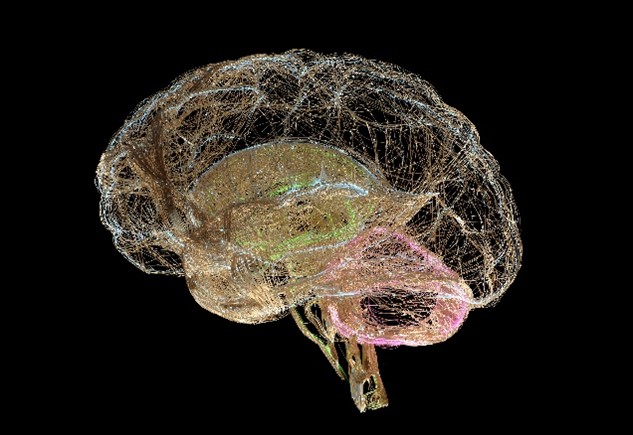
Key Objective: Decrease the number of brain injuries suffered by Delaware citizens and improve the quality of life for those who have suffered these injuries to prevent further injuries.
Traumatic Brain Injuries (TBIs) – What are They?
A traumatic brain injury, or TBI, is an injury that affects how the brain works. It may be caused by a:
- Bump, blow, or jolt to the head, or
- Penetrating injury (such as from a gunshot) to the head
There are three main types of TBI:
Source: (Get the Facts About TBI | Concussion | Traumatic Brain Injury | CDC Injury Center)
What Causes TBIs?
People most commonly get TBIs from a fall, firearm-related injury, motor vehicle crash, or an assault
Research shows:
- Falls lead to nearly half of the TBI-related hospitalizations11
- Firearm-related suicide is the most common cause of TBI-related deaths in the United States
- Motor vehicle crashes and assaults are other common ways a person may get a TBI
- What Does Brain Injury Look Like In Delaware? Know the Facts to Keep Your Child Safe!
What are the Symptoms of a TBI?
When to see a doctor:
Always see your doctor if you or your child has received a blow to the head or body that concerns you or causes behavioral changes. Seek emergency medical care if there are any signs or symptoms of traumatic brain injury following a recent blow or other traumatic injury to the head. The terms "mild," "moderate" and "severe" are used to describe the effect of the injury on brain function. A mild injury to the brain is still a serious injury that requires prompt attention and an accurate diagnosis.
Mild Traumatic Brain Injury:
The signs and symptoms of mild traumatic brain injury may include
|
Physical Symptoms |
Sensory Symptoms |
Cognitive, Behavioral, Mental Symptoms |
|
Headache
|
Sensory problems, such as blurred vision, ringing in the ears, a bad taste in the mouth or changes in the ability to smell
|
Loss of consciousness for a few seconds to a few minutes
|
Moderate to Severe Traumatic Brain Injuries
Moderate to severe traumatic brain injuries can include any of the signs and symptoms of mild injury, as well as these symptoms that may appear within the first hours to days after a head injury:
|
Physical Symptoms |
Cognitive or Mental Symptoms |
|
Loss of consciousness from several minutes to hours
|
Profound confusion
|
Children’s Symptoms:
Infants and young children with brain injuries might not be able to communicate headaches, sensory problems, confusion, and similar symptoms. In a child with traumatic brain injury, you may observe:
- Change in eating or nursing habits
- Unusual or easy irritability
- Persistent crying and inability to be consoled
- Change in ability to pay attention
- Change in sleep habits
- Seizures
- Sad or depressed mood
- Drowsiness
- Loss of interest in favorite toys or activities
Source: Traumatic brain injury – Symptoms and causes – Mayo Clinic
What Can I Do To Help Prevent A TBI?

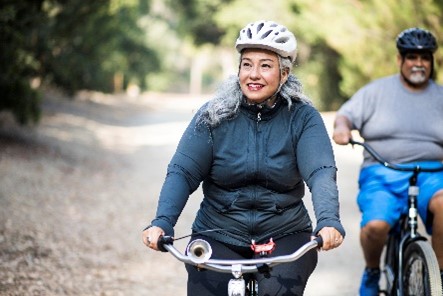

- Buckle Up Every Ride
Wear a seat belt every time you drive – or ride – in a motor vehicle.
- Never drive while under the influence of alcohol or drugs.
- Wear a helmet, or appropriate headgear, when you or your children:
- Ride a bike, motorcycle, snowmobile, scooter, or use an all-terrain vehicle;
- Play a contact sport, such as football, ice hockey, or boxing;
- Use in-line skates or ride a skateboard;
- Bat and run bases in baseball or softball;
- Ride a horse; or ski or snowboard.
Prevent Older Adult Falls:
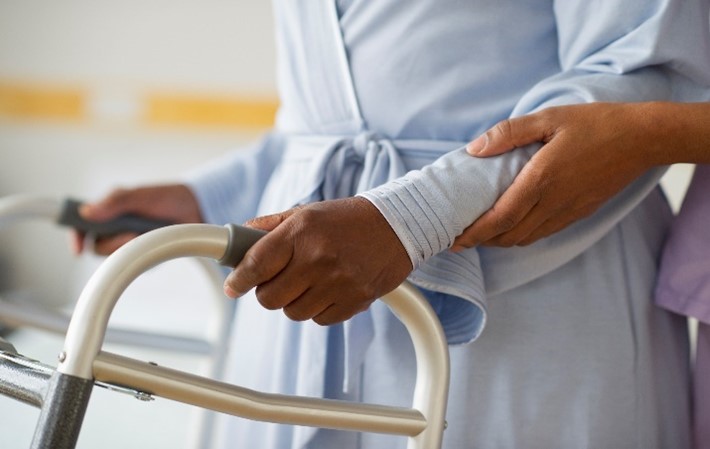
Talk to your doctor to evaluate your risk for falling and talk with them about specific things you can do to reduce your risk for a fall.
- Ask your doctor or pharmacist to review your medicines to see if any might make you dizzy or sleepy. This should include prescription medicines, over-the counter medicines, herbal supplements, and vitamins.
- Have your eyes checked at least once a year and be sure to update your eyeglasses if needed.
- Do strength and balance exercises to make your legs stronger and improve your balance.
- Make your home safer.
Make living and play areas safer for children:

- Install window guards to keep young children from falling out of open windows.
- Use safety gates at the top and bottom of stairs when young children are around.
- Make sure your child’s playground has soft material under it, such as hardwood mulch or sand.
Source: Prevention | Concussion | Traumatic Brain Injury | CDC Injury Center
What Should I do if I think Someone I know has a TBI?
Patients experiencing TBI or concussion danger signs should seek care right away at an emergency department. (Symptoms of Mild TBI and Concussion | Concussion | Traumatic Brain Injury | CDC Injury Center
Resource Links
Brain Injury Association of Delaware
State Council for Persons with Disabilities Brain Injury Committee
Delaware Interscholastic Athletic Association (DIAA)
Nemours/AI duPont Hospital for Children – Concussion Clinic
HEADS UP to Youth Sports | HEADS UP | CDC Injury Center
Youth Sports Safety Alliance
Children’s Safety Network
Delaware Health and Social Services, Division of Aging and Adults with Disabilities, Traumatic Brain Injury Information
Prevention of Motor Vehicle-Related Injuries Team
Pedestrian Safety is the focus for 2013 of the Motor Vehicle-Related Injury Prevention Team.
Rural Health Funds were utilized to purchase 16 mannequins (8 male and 8 female). Each of the 8 Delaware Trauma System hospitals were given 2 mannequins along with tee shirts. The tee shirts have the message "Be Safe. Be Seen." on the front and "Walk Safely and Don’t Become a Pedestrian Injury Statistic" on the back of the tee. These will be used at events, in hospital lobbies or local businesses to bring more attention to pedestrian safety. Pedestrian Safety events were held during the summer which included the mannequins and informational tables provided by the Coalition to address the pedestrian injuries and deaths up and down the state. Photos shows St Francis Hospital’s campaign for St. Patrick’s Day. Other photos can be found on the Motor Vehicle Injury Team page.

Prevention of Fall Injuries Across the Lifespan Team
Fall Prevention in Delaware
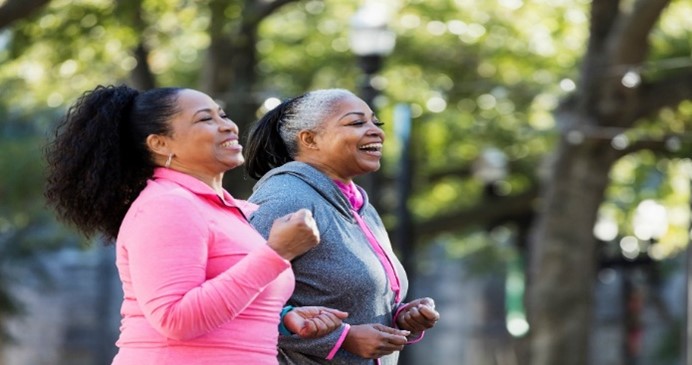
Key Objective: Discuss Best Practices in Fall Prevention for Delawareans Across the Age Span
What is a Fall and Why is Fall Prevention important?
- Falls are the leading cause of hospitalized injury in the U.S. for children ages 0 to 14. (Falls Prevention | Children’s Safety Network (childrenssafetynetwork.org)
- Falls are the leading cause of fatal and nonfatal injuries among older adults.
- Falls result in more than 3 million injuries treated in emergency departments annually, including over 800,000 hospitalizations. (Get the Facts on Falls Prevention (ncoa.org)
Fall Prevention for Children:

- Screens are meant to keep bugs out, not children in. Properly install window guards to prevent unintentional window falls. For windows above the first floor, include an emergency release device in case of fire.
- Keep babies and young kids strapped in when using highchairs, infant carriers, swings or strollers. When placing your baby into a carrier, remember to place the carrier on the floor, not on top of a table or other furniture.
- Use approved safety gates at the tops and bottoms of stairs and attach them to the wall, if possible. Remember to read the manufacturer’s instructions and warning labels to make sure you have the right gate for your needs. Not all gates are safe for use at the top of stairs.
- Secure TVs and furniture to the wall using mounts, brackets, braces, anchors or wall straps to prevent tip-overs. These kinds of accidents happen more than you might think, so take a few minutes, secure your TV and furniture, and then never worry about it again.
- Take your kids to playgrounds with shock-absorbing surfaces such as rubber, synthetic turf, sand, pea gravel, wood chips or mulch. If your child falls, the landing will be more cushioned than on asphalt, concrete, grass or dirt.
Source: Here are some Top Tips from SafeKids Worldwide
Fall Prevention in Older Adults

Speak Up
- Talk openly with your doctor about fall risks and prevention.
- Tell your doctor right away if you have fallen, if you’re afraid you might fall, or if you feel unsteady.
- Review all your medicines with your doctor or pharmacist and discuss any side effects like feeling dizzy or sleepy. Some medicines, even over-the-counter medicines and herbal supplements can increase your fall risk.
- Do you get dizzy or lightheaded when you go from sitting to standing? It is important to mention this to your doctor. For more information, the CDC’s Postural Hypotension brochure has information on how to manage these symptoms.
- Have your eyes checked annually and update your glasses, as needed. Conditions like cataracts and glaucoma limit your vision.
- Have your feet checked. Discuss proper footwear with your doctor and ask whether seeing a foot specialist (podiatrist) is advised
Stay Active
- Do exercises that make your legs stronger and improve your balance (like Tai Chi).
Make Your Home Safe
- Get rid of trip hazards. Keep floors clutter free.
- Add grab bars in the bathroom.
- Have handrails and lights installed on all staircases.
- Use the Check for Safety brochure to help identify and eliminate additional fall hazards in your home. Source: Keep on Your Feet—Preventing Older Adult Falls | CDC
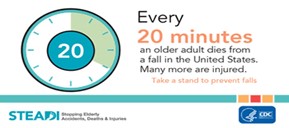
Use the STEADI program to help identify and understand your risks for a potential fall: https://www.cdc.gov/steadi/patient.html
Other Fall Prevention Topics:
Classes and Courses:
Nemours: https://www.nemours.org/services/health/safety-injury-prevention.html
ChristianaCare: Safe Steps – ChristianaCare
Injury Prevention – ChristianaCare
Volunteer Delaware 50+ A Matter of Balance Programs: https://volunteer.delaware.gov/matter-of-balance
Helpful Links/Sources:
Falls Prevention for Older Adults (ncoa.org)
https://www.cdc.gov/steadi/pdf/STEADI-Brochure-WhatYouCanDo-508.pdf
Keep on Your Feet—Preventing Older Adult Falls | CDC
Check For Safety A Home Fall Prevention Checklist For Older Adults (cdc.gov)
Falls Prevention | Children’s Safety Network (childrenssafetynetwork.org)
CDC – Falls – Children – Home and Recreational Safety – Injury Center
Fall Prevention for Big Kids | Safe Kids Worldwide
www.safekids.org
Sources:
Keep on Your Feet—Preventing Older Adult Falls | CDC
Get the Facts on Falls Prevention (ncoa.org)
Prevention of Drowning and Submersion Injuries Team
-
SWIMMING LESSONS, Summer 2013
The Drowning and Submersion Injury Prevention Team, in collaboration with the Sussex Family YMCA and with funding from the Delaware Office of Rural Health, was able to provide swimming lessons to 81 children. The goal of this program was to provide structured teaching time to enhance current swimming skills based on the established and successful guidelines of the YMCA of the USA Swim Lesson Program. An added benefit of the swim lessons for these children were the opportunities to build their confidence through the improvement of their swimming skills.
In addition, the Team partnered with the Milford Parks and Recreation Department to provide swimming lessons to beginner and toddler swimmers.
Prevention of Dog Bite Injuries Team
-
"MEET THE BREEDS" DOG BITE INJURY PREVENTION EVENT, Summer 2013
This event was held at the Delaware State Fair to acquaint the public with dog breeds and safety issues pertaining to dogs. This year the joint venture combining the resources of multiple purebred dog groups and rescue groups, the Mispillion Kennel Club, and the Coalition’s Dog Bite Injury Prevention Team was able to present demonstrations on obedience, Canine Good Citizen and appropriate behaviors around dogs. Attendance to the 3-hour event was approximately 500 persons.
Are you interested in volunteering to help educate the public on ways they can prevent injuries to themselves and their families? Would you and/or your agency like to become Coalition for Injury Prevention members?
If so, we would love to have your help! Just print, complete, and fax or email the New Member Form
For questions, feel free to contact the Injury Prevention Program in the Delaware Office of Emergency Medical Services at (302) 223-1350.
THANK YOU TO THE MEMBERS OF THE DELAWARE COALITION FOR INJURY PREVENTION AND THEIR AGENCIES FOR THEIR SUPPORT and LIFESAVING WORK!
And a very special thank you to the Delaware State Office of Rural Health for Financial Support.
![]() Please note: Some of the files available on this page are in Adobe PDF format which requires Adobe Acrobat Reader. A free copy of Adobe Acrobat Reader can be downloaded directly from Adobe . If you are using an assistive technology unable to read Adobe PDF, please either view the corresponding text only version (if available) or visit Adobe’s Accessibility Tools page.
Please note: Some of the files available on this page are in Adobe PDF format which requires Adobe Acrobat Reader. A free copy of Adobe Acrobat Reader can be downloaded directly from Adobe . If you are using an assistive technology unable to read Adobe PDF, please either view the corresponding text only version (if available) or visit Adobe’s Accessibility Tools page.





